In a digital economy driven by shareability, the real world becomes marketing’s most underused asset. Location-based Augmented Reality (AR) taps into that gap by placing immersive digital or 3D content directly onto the physical world—with the exclusivity of only being able to access the experience by visiting the site.
From store windows to stadiums, iconic landmarks, parks or events, location-based AR turns any space into a stage for culture, storytelling, or product engagement.
More than just the experiential immersion, location-based AR delivers ROI. It drives foot traffic, builds brand affinity, and fuels user-generated content (UGC). Most importantly, it shifts a passive location into an interactive destination.
And that’s the magic of location-based augmentation: digital content that feels physical, ephemeral, and rooted in place—but is infinitely easier to deploy. It’s real world engagement without real-world complexity.
Key Takeaways
- Location-based AR makes physical spaces interactive, transforming real-world environments into digital canvases.
- Delivers real business results, like Cadbury’s Easter Egg campaign, which attracted 2+ million visits and led to 14,500 real eggs purchased.
- Visually stunning experiences trigger user-generated content (UGC), FOMO (the fear of missing out), and viral sharing, with UGC-based ads seeing 4 times more clicks than average.
- Highly cost-effective and easy to scale across locations, with far less logistical friction than traditional physical builds that require permits, crews, or shipping.
- Enables brands to bring offline customers online, capturing data and analytics on which locations they visited and which activations are resonating with the audience.
- Works across different tech setups, making it easy to match the right tool for your specific campaign goals.
- Future-proof, with the global location-based entertainment market expected to reach USD 53.33 billion by 2034, driven by growing consumer demand for more immersive, personalized experiences and rapid advances in AR tech and AI.
What is Location Based AR?
Location-based AR, also known as Geo-based or Markerless AR, places digital content at real-world locations, allowing users to unlock experiences only when physically present at that spot. Depending on the platform, tech like GPS, VPS (visual positioning system), sensor data, WebAR markers (geospatial data and camera input) are used to provide precise placement of 3D content to align with real-world coordinates.
Here you can take a look at some highlights from our location-based AR projects, where we helped brands inspire, engage, and connect with audiences through real-world interaction.
Why Location Based AR Matters Now
Inspiring physical activations can be costly, complex, and operationally limiting. Want a 20-foot sculpture? You’ll need permits, insurance, setup crews, and takedown time. Want an interactive AR experience outside that same venue? You just need an app or WebAR trigger.
Consumers crave real-world experiences—but they also want digital enhancement. The reasons are clear: these experiences feel exclusive, they create FOMO, and hence drive more content creation. Data show that over 300 million people use Snapchat AR filters daily, highlighting the strong demand for immersive digital experiences.
Location-based AR makes the impossible feel present, and the temporary feel timeless. It allows brands to:
- Launch campaigns on short notice
- Test multiple creative ideas without physical buildout
- Create scalable experiences across multiple cities simultaneously
- Embed measurable analytics into the activation from day one
At its core, it’s the evolution of “showing up”—without having to ship a booth or build a stage. From a brand’s perspective, Augmented Reality campaigns tied to real-world places deliver clear metrics and repeatable outcomes.
Your customers want personalized experiences that show you understand them, and sometimes that means giving them relevant information and experiences based on their location. Nearly 90% of marketers say that location-based marketing has resulted in higher sales. Now, with location-based AR, you can scale digital experiences to any location and deliver them to the right customer.
With the global location-based entertainment market projected to grow to USD 53.33 billion by 2034, brands that invest now will be well-positioned to lead the next wave of immersive, location-driven engagement.
This isn’t just about novelty—it’s a scalable strategy for experiential marketing that doesn’t require multi-million-dollar installations or city permits.
Let’s chat
Not sure where to start? Book a free strategy call with us to get started! No strings attached.
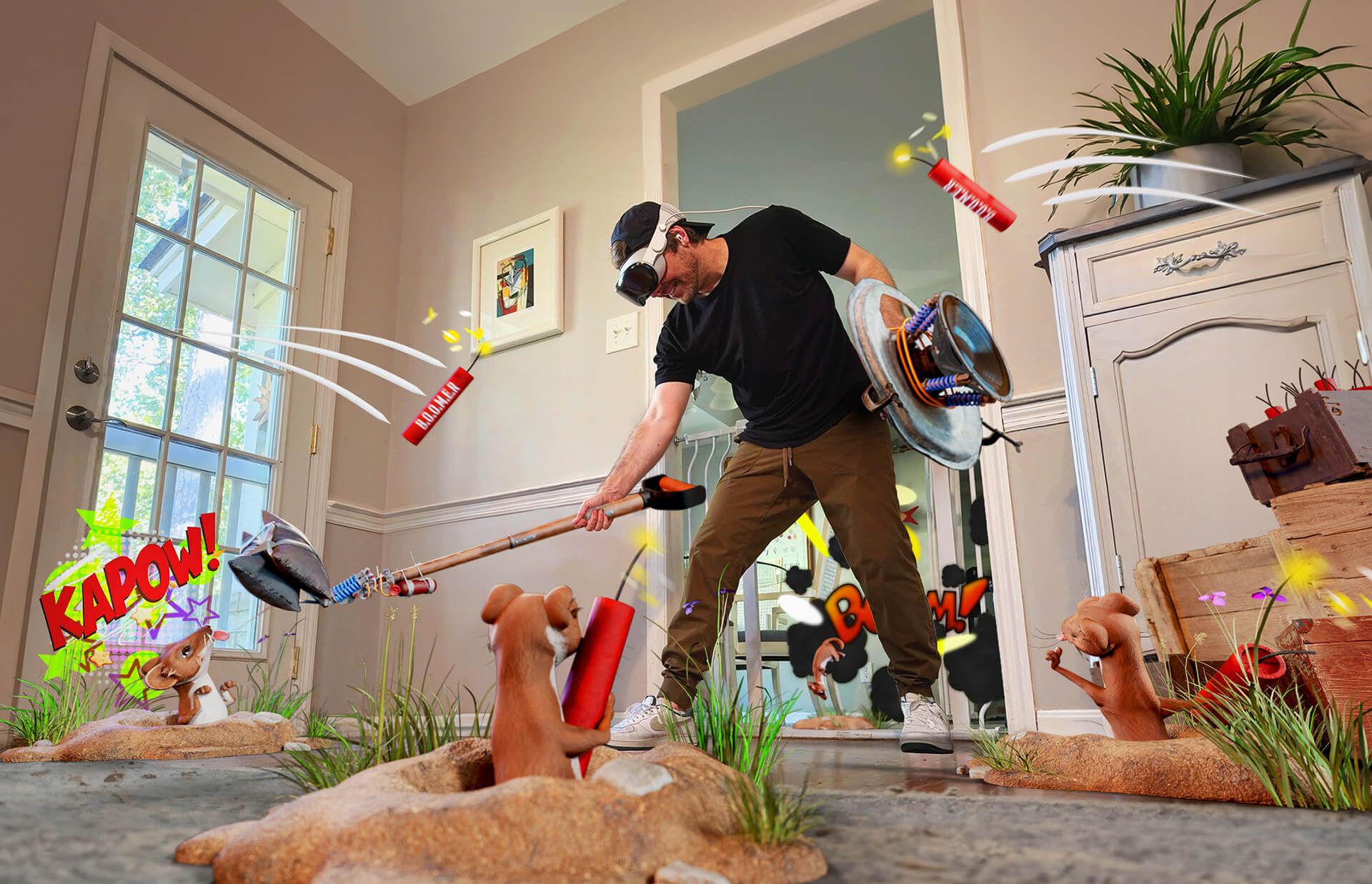
Use Cases: AR That Meets People Where They Are
Sports, Media & Entertainment
Location-based AR thrives where crowds gather. This includes stadiums, arenas, or concert venues where fan activations can transform waiting lines into scavenger hunts or games. For T-Mobile’s F1 partnership RPR made use of location-based AR live for fans queuing on the Las Vegas strip.
One of the most iconic examples of location-based AR in entertainment is Pokémon GO. As of 2025, the game continues to hold strong with over 90 million monthly players worldwide. It remains a blueprint for how location-based AR gaming experiences can drive repeat engagement and movement.
The demand for AR is also growing across entertainment venues. Theme parks are increasingly using AR to elevate the visitor experience. In May 2025, Disney and Miral announced a new immersive theme park and resort in Abu Dhabi, focused on delivering world-class digital storytelling integrated with physical space. This is a clear signal that the future of entertainment will rely heavily on AR-powered environments.
Retail & Experiential Marketing
AR activations in store windows, pop-ups, or retail shelves create surprise-and-delight moments. Animating latest releases in 3D outside flagship stores or even turning a billboard into a virtual try-on experience, captures vast user interest. Major brands like Honda, Tripadvisor, and Lego have used AR murals in high-traffic locations to capture attention, with research indicating that nearly 70% of consumers take action after seeing interactive AR outdoor ads.
Another T-Mobile activation by RPR was at Times Square, New York using geospatial triggers to build holiday buzz and viral social content.
Cultural Institution & Preservation
With AR, museums can revive lost structures and show the evolutionary timeline of historic moments and objects, all without damaging the actual pieces or sites. RPR’s collaboration with Google in Paris uses AR overlays to convey the progression of historical landmarks, a strong application for museums or preservation organizations to create similar immersive experiences that blend physical and digital storytelling for memory-rich engagements.
Education
AR’s transformative power turns textbooks into field trips with just a phone screen. Concepts can unfold on-location with floating 3D objects and walk-throughs emerging in real-time environments. Such abilities of visualization and demonstration with locational Augmented Reality offers a memorable way to blend physical presence with layered understanding that stays in a learning mind longer.
Tourism & Hospitality
Landmarks, statues, and historical sites also become portals to another dimension with AR. Cities can turn neighborhoods into living timelines and educate users while they explore, blending tradition with tech. RPR’s Paper Tree Japantown for example, is an animated immersion with cherry blossoms and origami as a cultural storytelling to the San Francisco Japantown plaza.
Food & Beverage
Location-based AR can add a layer of magic to seasonal campaigns, product launches, limited-time promotions, and loyalty programs. A great example is Cadbury’s Worldwide Hide, an Easter AR experience developed by VCCP London using the Google Maps platform. Users could buy a real Easter egg, hide it virtually on Google Maps for a loved one, and send them a personalized clue. Once found, the egg was delivered to the recipient’s door. The campaign attracted over 2 million visits, with more than 809,000 virtual eggs hidden and 14,500 real Cadbury Easter eggs purchased, showing how AR can turn something simple into something memorable and drive real business results.
As consumer expectations shift toward more interactive and personalized experiences, food and beverage brands can use location-based AR to build emotional connections, drive online purchases, and create shareable moments tied to specific locations.
UGC, Exclusivity, and Faux-OOH: How it goes Viral
Why do location-based AR campaigns go viral? What is it that makes people want to record or share it? With the rise of CGI-enhanced TikToks, faux out-of-home ads, and AI-generated media, users now expect campaigns to look like movie magic. A geospatial AR experience isn’t just fun to use, it’s visually stunning to film. Location based-AR goes viral because it’s made to feel like magic was captured. And when users become part of the story, it delivers real results: user-generated content drives 29% more web conversions compared to campaigns or websites that don’t use it, while UGC-based ads get 4x higher click-through rates.
That’s why RPR encourages clients to not only launch the AR—but also create stylized CGI videos or influencer walkthroughs to fuel momentum that makes this content feel exclusive and urgent. RPR’s Adobe MAX Conference AR activation created buzz not just through on-site interaction, but via hundreds of social clips re-shared by attendees and creators alike.
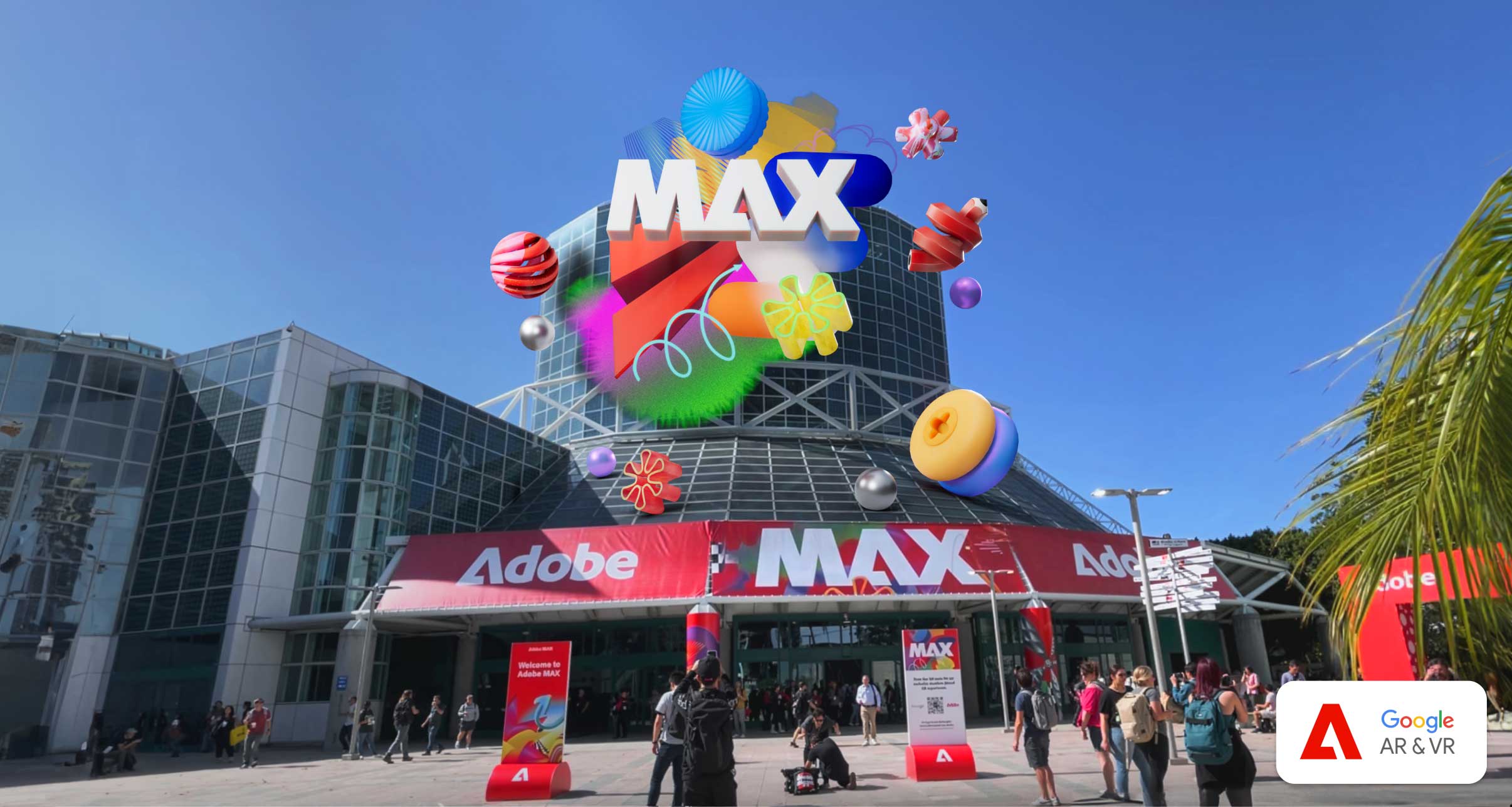
Choosing the Right Tech Stack
Locational AR isn’t just one-size-fits-all. Each platform offers unique strengths depending on your goal, location, and audience. Here’s a breakdown:
1. Google Geospatial on ARCore
Ideally AR with Google Maps should be used for high-accuracy urban overlays and persistent content. For example, RPR previously overlaid AR on historical sites during the Paris Olympics, in collaboration with Google Maps. Google Geospatial is built on 15 years of scanning the world and is one of the most accurate Visual Positioning Systems available.
- Pros: Robust 3D positioning; ideal for cities, landmarks
- Cons: Requires app (Unity SDK); heavier dev lift
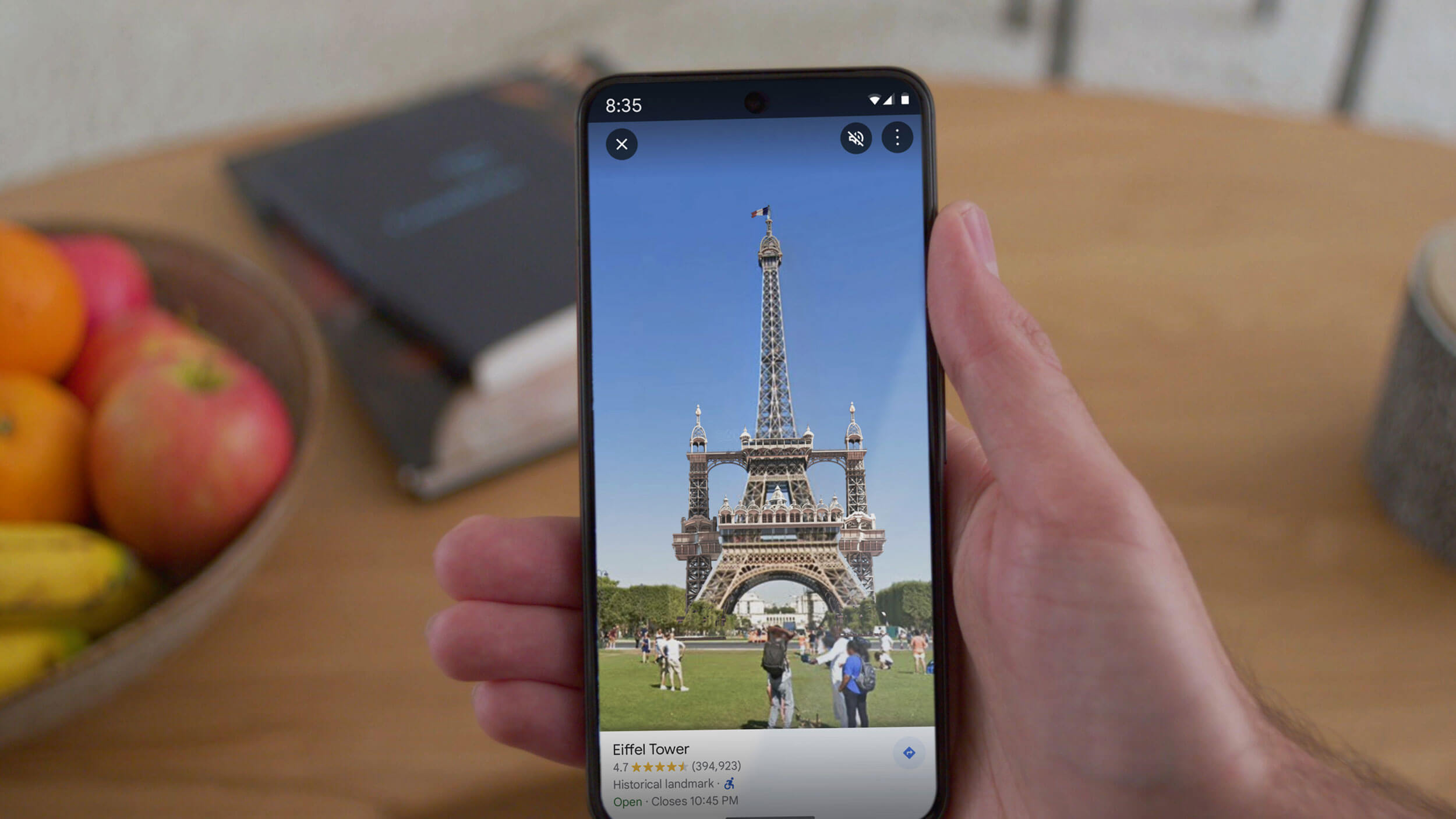
2. 8th Wall (WebAR)
It’s best to use Web AR when looking for lightweight campaigns that require no app installs, and often becomes the best choice for campaigns that need a quick turn-around in time for retail or events.
- Pros: Fast deployment; works across devices via browser
- Cons: Limited positional fidelity vs app-based SDKs
3. Niantic Lightship VPS
Outdoor spaces like stadium-based activations, multiplayer or gamified experiences, and citywide scavenger hunts with multiple users are some ideal use cases for VPS.
- Pros: Built for scale; optimized for exploration
- Cons: Still evolving; needs calibration
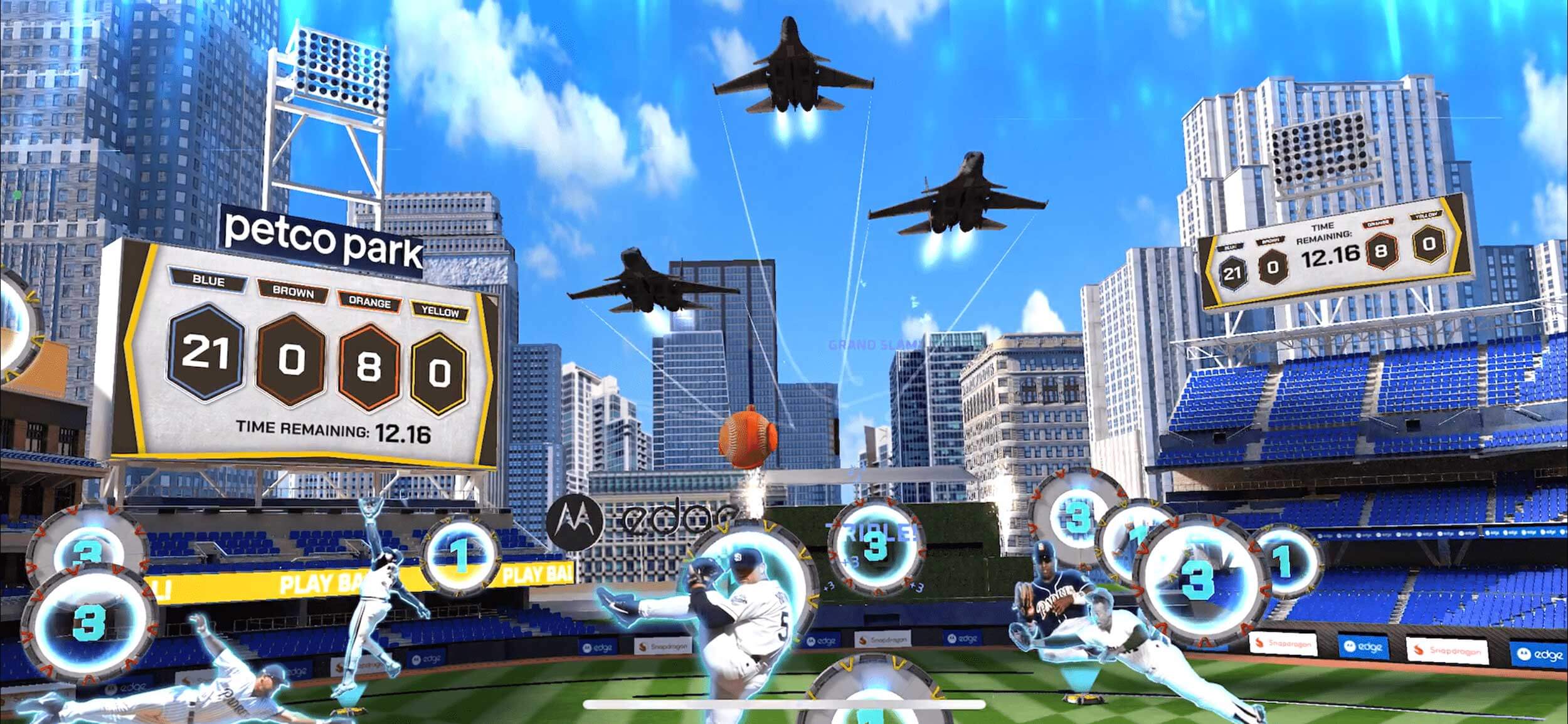
4. Adobe Aero (Sunsetting)
Previously, Adobe Aero used to be the WebAR partner for Google Geospatial and supported web-based Google integrations, but as of 2024 it’s deprecated and isn’t recommended for new projects.
The key is not just choosing a tool, but choosing the right partner. RPR has deployed across all major platforms and can guide clients from creative concepts through deployment.
Keep up to date
Sign up to our newsletter for exclusive updates and content, delivered directly to your inbox.

Measurement & ROI: Why It Works
Unlike physical installations, location-based AR provides real-time feedback that campaign managers can track and evaluate for further use. Some data from locational AR that can be extracted contains:
- Session duration
- Geo-specific engagement heatmaps
- UGC creation volume
- Social shares and CTA click-throughs
This data gives marketers the ability to iterate and scale quickly. A campaign that performs well in one city can be geo-cloned for others, even fine-tuned to local culture or site-specific relevance. Depending on the site, AR activations also become wayfinding tools when paired with branded maps, enhancing both usability and storytelling. That’s especially powerful at large-scale events where attendees need help navigating multiple zones or booths. Branded maps solve a real pain point for large venues and festivals, offering a utility-first AR experience that delivers clear value to both users and brands with navigational assistance and digital landmarks.
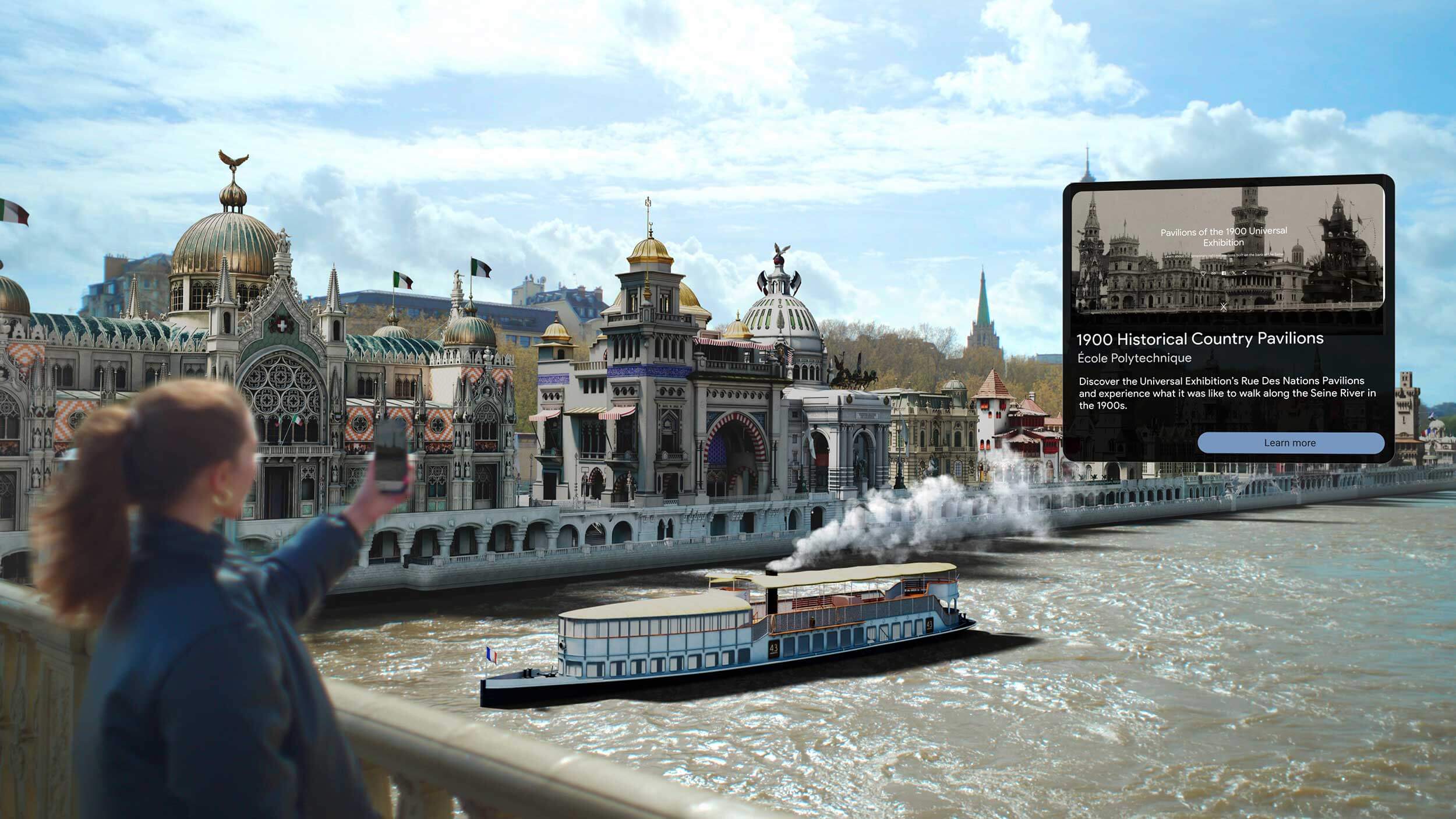
Future Consideration
Location-based AR is no longer a nice-to-have. It’s a powerful, proven tool for engagement—whether you’re launching a product, guiding a crowd, or telling a story that belongs to a place.
RPR’s track record in this is unmatched. As back-to-back winners of the Auggie Award for Location-Based Entertainment, the team has consistently delivered best-in-class activations that blend creativity with technical precision.
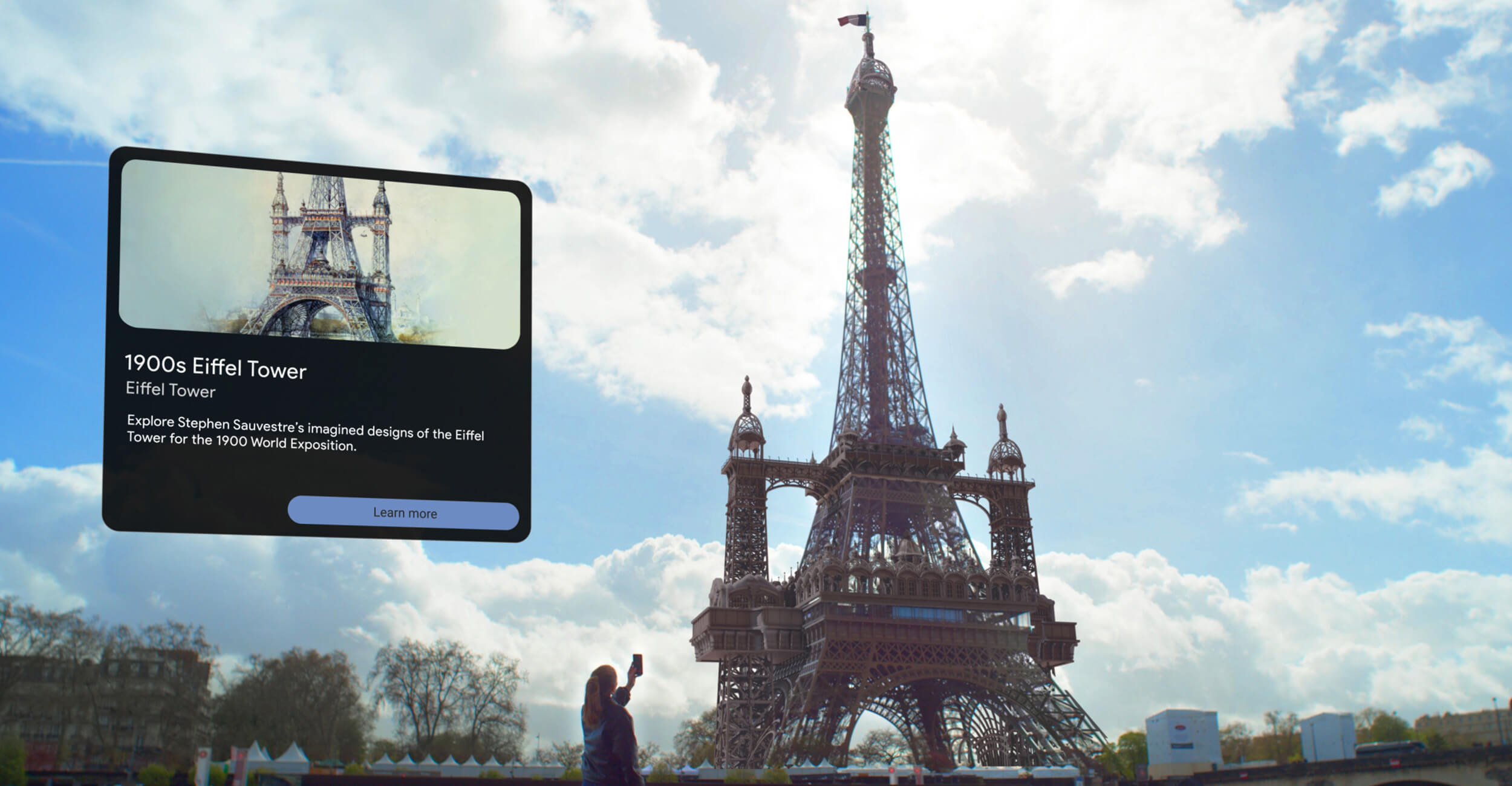
From the Paris Olympics Google Maps AR project to the physical installation of McCain’s interactive food experience, RPR continues to extend the standard for what’s possible when the digital and physical worlds collide. Not just replacing the real world but giving it more to say. By layering immersive content onto real-world spaces, brands unlock an entirely new dimension of interaction: one that’s timely, exclusive, and unforgettable.
But the biggest shift is still ahead.
The next wave of computing will be defined by lightweight, always-on smartglasses—think Meta’s Ray-Bans with a visual layer. Devices like Meta’s upcoming Orion glasses and Google’s XReal partnerships will make heads-up navigation and contextual content an everyday expectation. For brands, that means location-based AR won’t just be a marketing channel, it will be a default interface with the physical world.
Navigation will be one of the killer apps of this new era. And brands that already have immersive, geo-anchored content will have a major head start. Now is the time to start building!
The Google Maps Platform, with AndroidXR compatibility, offers a future-proof foundation that ensures anything built today can scale seamlessly to tomorrow’s smartglasses. Add in platforms like 8th Wall for web-based deployment, and you’ve got the tools to be both early and everywhere.
Location-based AR isn’t just the future. It’s the on-ramp to the next generation of digital experiences and it’s already here.
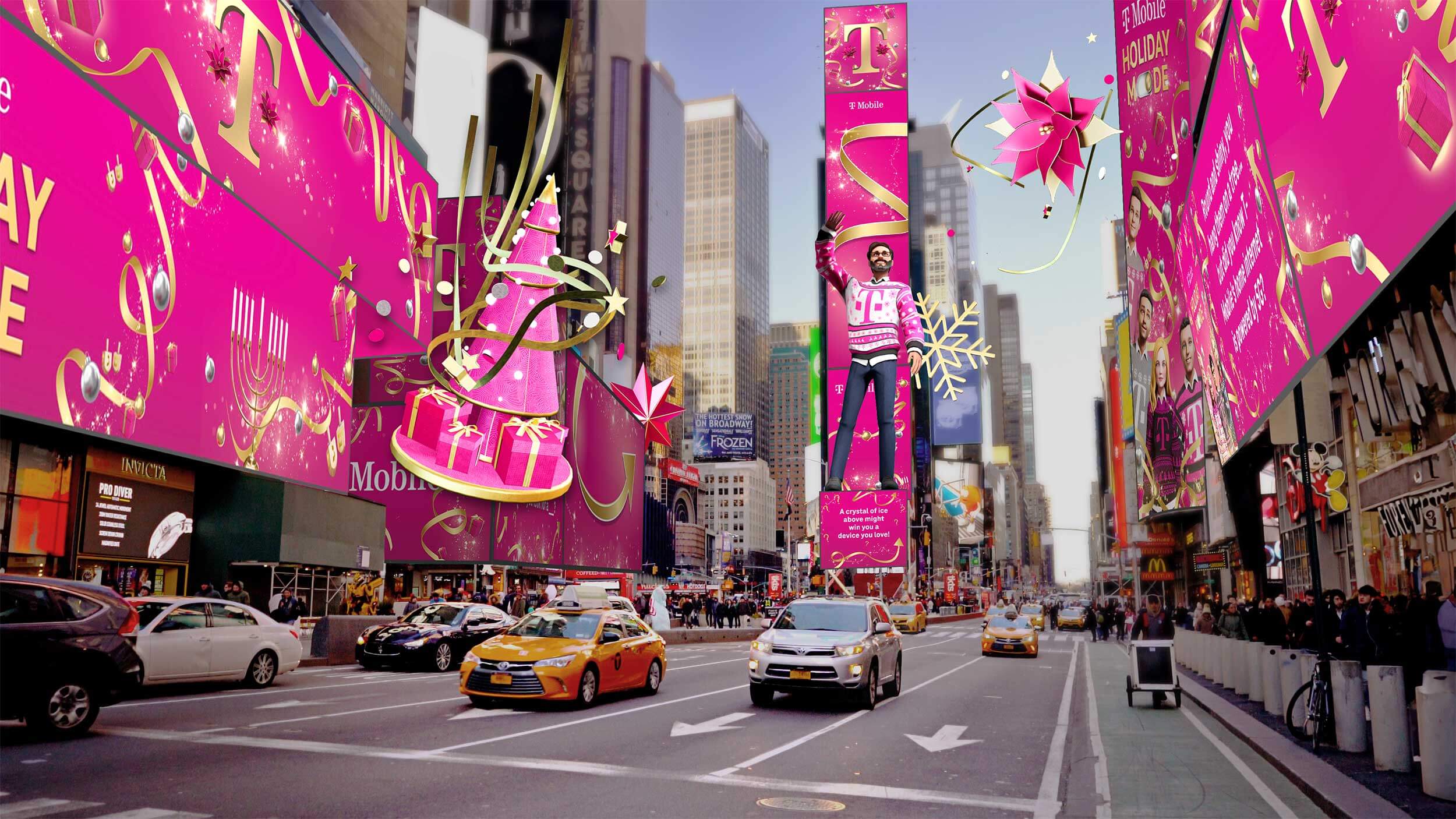
FAQs About Leveraging Location-Based AR
What is location-based AR and how does it work?
Location-based AR, also known as geo-based or markerless AR, places digital content at real-world locations, allowing users to unlock experiences only when physically present at that spot. Depending on the platform, tech like GPS, VPS (visual positioning system), sensor data, WebAR markers (geospatial data and camera input) are used to provide precise placement of 3D content to align with real-world coordinates.
What are the top 5 ways to leverage location-based AR?
There’s endless potential to leverage location-based AR for engagement. Brands are known to use it for retail displays, fan activations at stadiums, citywide scavenger hunts, AR-enhanced tourism, and immersive educational walk-throughs—blending physical presence with digital storytelling.
What are some examples of location-based AR?
RPR’s Paris Olympics AR in Google Maps, T-Mobile F1 Times Square experience, and Paper Tree Japantown activation in SF are all live examples of geospatial campaigns that drew significant UGC and foot traffic.
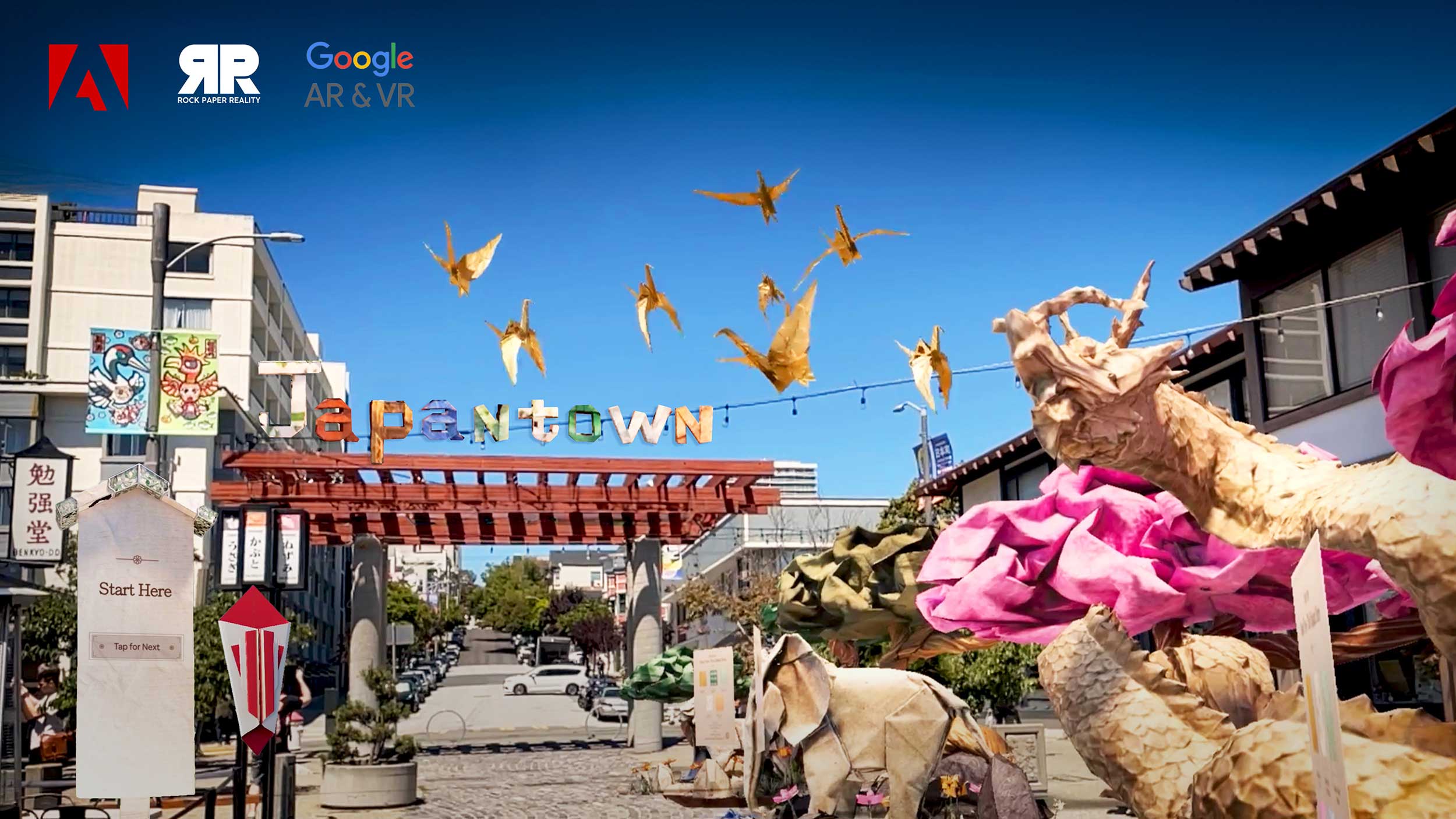
Is an app or download always required to run location-based AR?
Not necessarily. WebAR platforms like 8th Wall allow users to launch AR via browser links—no app needed. However, app-based SDKs like Google Geospatial or Niantic Lightship offer better precision for complex scenes.
How is location-based AR different from standard AR?
Standard AR works anywhere with regular surface detection – looking for a flat surface to place the 3D content. Location-based AR on the other hand ties experiences to specific GPS or VPS coordinates, for example the infamous staircases of the MET Museum—making them inherently exclusive and place-based.
References
- https://www.socialpilot.co/blog/snapchat-statistics
- https://rockpaperreality.com/insights/ar-use-cases/rpr-launches-ar-campaigns-with-adobe-aero-and-googles-geospatial-creator/
- https://mountain.com/blog/location-based-marketing/
- https://www.marketresearchfuture.com/reports/location-based-entertainment-market-24252
- https://www.locachange.com/pokemon-go/pokemon-go-statistics/
- https://thewaltdisneycompany.com/disney-announces-abu-dhabi-theme-park/
- https://www.brandxr.io/2025-augmented-reality-in-retail-e-commerce-research-report
- https://mapsplatform.google.com/resources/blog/cadbury-worldwide-hide-inspiring-ritual-hiding-eggs-and-connecting-people-google-maps-platform/
- https://everyonesocial.com/blog/user-generated-content-statistics/
- https://www.google.com/url?q=https://developers.google.com/ar/develop/geospatial&sa=D&source=docs&ust=1752742001591078&usg=AOvVaw3lW1CbPKAo2ZMW9YKman9X
- https://rockpaperreality.com/our-work/adobe-aero-and-adobe-max-2023/
- https://rockpaperreality.com/our-work/rpr-launches-first-of-its-kind-experience-with-adobe-aero-and-google-geospatial/
- https://rockpaperreality.com/our-work/first-of-its-kind-ar-content-launch-in-google-maps-in-collaboration-with-google-arts-and-culture/
- https://rockpaperreality.com/our-work/geospatial-sweepstake-campaign-for-t-mobile/
- https://rockpaperreality.com/our-work/geospatial-storefront-experience-for-t-mobile/
- https://rockpaperreality.com/our-work/mccain-farms-of-the-future/
